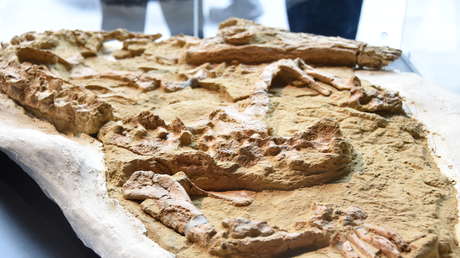
A group of paleontologists from Peru presented the fossil of a small marine crocodile found on the coast of the Andean country that is approximately 10 million years old.
During a symposium of the International Congress of Paleontology of Peru, which will take place until Friday in an auditorium of the Ministry of Energy and Mines in Lima, it was indicated that it measures about three meters.
This Thursday, the Geological, Mining and Metallurgical Institute (Ingemmet) detailed in a press release that it would belong to the extinct genus 'Piscogavialis'.
It was found in perfect condition by paleontologist Mario Urbina at the end of last year in the Ocucaje desert, located in the department of Ica about 350 kilometers south of Lima.
"This gharial crocodile fossil has special characteristics, because it is the first time that a juvenile specimen has been discovered in Peru and it also has an almost complete articulated skeleton, between three and four meters. These specimens, in adulthood, reached up to nine meters in length," said Ingemmet.
The vertebrate paleontologist, Mario Gamarra, expressed the same opinion during a press conference. "It is the first time that we have found a juvenile of this species, that is, it had not yet reached its maximum size. It died before that," he said.
Gamarra specified that these specimens had a cranial and mandibular morphology different from that of current crocodiles and alligators. "They had an elongated snout and their diet was completely piscivorous, they fed on fish and not so much on meat," he added.
The coastal desert of Ocucaje, 40 kilometers inland from the coast that borders the Pacific Ocean, is defined by researchers as a place rich in fossils. In fact, in 2022, the skull of a huge basilosaurus dating back 36 million years was discovered there. (Text and photo: RT)